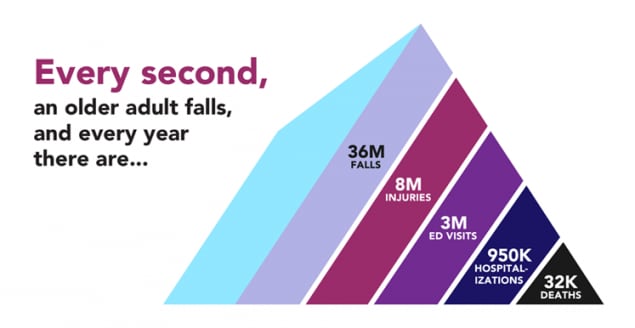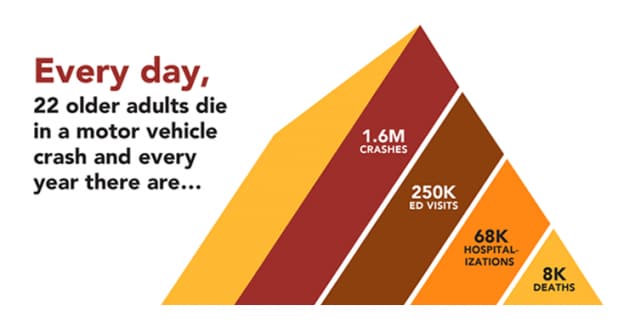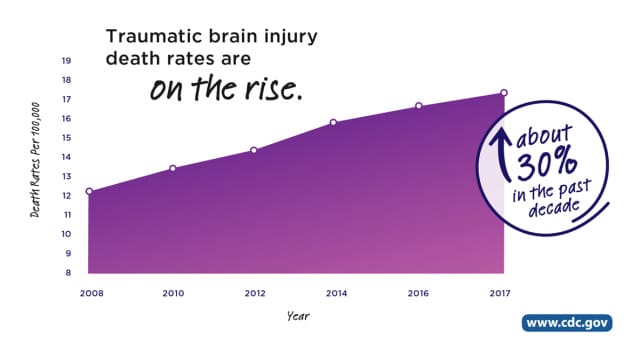Age Without Injury—Still Going Strong Campaign

Injuries from falls and car crashes are more common as we age. You can take simple steps to prevent these injuries from happening, so you can stay healthy and independent longer.
Older adults – those age 65 and older—are at an increased risk of health problems and injuries from falls and car crashes. CDC developed the Still Going Strong campaign to help older adults and their caregivers learn about risk factors for falls and crashes—and ways to prevent them.
Over 10,000 people in the United States turn 65 every day. Each year, older adults experience 36 million falls and 1.6 million car crashes. An injury from a fall or car crash can decrease their independence. But, getting older doesn’t have to mean giving up your favorite hobbies and activities.
It’s important for older adults and their caregivers to understand common injuries that can happen as we age and what we can do to prevent these injuries.


- Tell your doctor if you have fallen, if you feel unsteady when standing or walking, or if you’re afraid you might fall. Talk to your doctor about fall prevention and safe driving strategies.
- Ask your doctor or pharmacist to review the medicines you take—both prescription and over the counter. Some medicines might make you dizzy or sleepy or may reduce your reaction time.
- Have an eye doctor check your eyes at least once a year and update your eyeglasses as needed.
- Have your doctor check your feet at least once a year and discuss proper footwear to reduce your risk of falling.
- Do exercises that make your legs stronger and improve your balance, like Tai Chi.
- Make your home safer by removing throw rugs, using extra lighting or brighter light bulbs, installing grab bars in bathrooms and handrails on both sides of staircases.
- Only drive during daylight and in good weather, and always wear a seat belt—as a driver or passenger.
- Never drink and drive—alcohol reduces coordination, impairs judgement, and increases the risk of being in a crash.
- Plan your drive to find the safest route and leave a large following distance between your car and the car in front of you.
- Avoid distractions in your car, such as listening to a loud radio and talking or texting on your phone.
- Consider riding with a friend or family member, taking a ride share service, or using public transportation.
- If you have fallen or are in a car crash, have your doctor check you for signs and symptoms of a brain injury.

- Talk openly with your loved ones and their doctors about fall prevention and driving safety.
- Check with their healthcare provider to see if it’s safe for participate in strength and balance exercises, such as Tai Chi.
- Have your loved one’s eye checked by an eye doctor at least once a year and replace eyeglasses as needed.
- Have a healthcare provider check their feet once a year and discuss proper footwear.
- Help make their home safer by removing trip hazards, like throw rugs, and keep floors clutter free. Brighten their home with extra lighting or brighter bulbs. Install grab bars in the bathrooms and handrails on both sides of staircases.
- Encourage your loved one to always wear their seat belt as a driver and as a passenger.
- Encourage them to only drive when conditions are safest and to use alternative transportation options or offer to drive them yourself.
- Learn the signs and symptoms of mild TBI and concussion and moderate to severe TBI. Brain injuries are often missed or misdiagnosed in older adults.

- Use CDC’s Stopping Elderly Accidents, Deaths, and Injuries (STEADI) resources to:
- Screen all patients age 65 and older for fall risk factors
- Assess at-risk patient’s modifiable fall risk factors
- Intervene to reduce identified risk using effective clinical and community strategies
- Screen and assess patients for potential driving concerns.
- Evaluate your patient’s prescription and over-the-counter medicines and assess if they can move to a lower dosage or discontinue use.
- Talk to your patients about having their vision checked yearly and wearing proper eyewear.
- Encourage your patients to use alternative transportation options, instead of driving.
Falls
- Falls are the leading cause of fatal and nonfatal injuries in older adults.
- An older adult falls every second of the day, accounting for over 36 million falls each year.
- Of those falls, 1 out of 5 causes a serious injury, such as broken bones or a head injury.
- After a fall, an older adult’s chances of falling again and getting injured increase.
Sources: National Vital Statistics System, National Electronic Injury Surveillance System―All Injury Program, and Behavioral Risk Factor Surveillance System.
Car Crashes
- Over 46 million licensed older adults live in the U.S., or 1 in 5 drivers.
- Driving helps older adults stay independent, but the risk of being injured or killed in a motor vehicle crash increases as we age.
- Every day, 700 older adults are injured in a motor vehicle crash and 22 die because of their injuries.
Sources: National Vital Statistics System, National Electronic Injury Surveillance System―All Injury Program, and Fatality and Injury Reporting System Tool (FIRST).
Traumatic Brain Injury (TBI)
- Falls and motor vehicle crashes are common causes of TBI hospital stays and deaths in older adults.
- TBI is a major cause of death and disability.
- Older adults who survive a TBI can have lingering health effects that last a few days or the rest of their lives.
Still Going Strong campaign resources are available to download and share.
Resources include a partner toolkit, full- and half-page print ads, animated GIF, videos, radio spots, and social media images. Full page ads will be published in magazines popular with older adults and radio interviews and spots are being broadcast across the U.S. Digital ads are also appearing on webpages frequented by older adults, including AARP.


